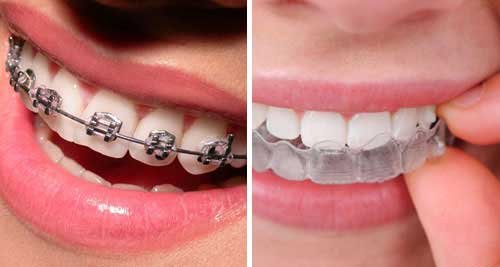The most common reason for wearing braces is to improve facial appearance; however, many people are unaware that there are other issues that require orthodontic treatment, such as open bite, jaw structure, and crossbite.
Adult teeth, often known as permanent teeth, replace primary teeth, which help with appearance, speaking, and digestion. During this time, people may experience a variety of problems that can be addressed with braces. The following are some of the issues:
Mixed dentition is a stage in life when a person’s mouth contains a mix of primary and permanent teeth. The following issues are alleviated by wearing braces at this stage:
Each individual is unique. Orthodontic therapy can begin as early as the age of seven. In terms of age, Braces have no upper restriction.
You can receive braces at any age if you have good dental health and solid teeth.
Orthodontic therapy comes in a variety of forms for people of all ages.
These are the most typical and traditional braces. Metal braces are far more comfortable and smaller in size nowadays. To tie the wire to the braces, you’ll need elastics in a range of colours. The wires harness the heat from your body to shift teeth more swiftly and painlessly. Metal braces have no age restrictions, and patients of all ages can use them to straighten their teeth.
Metal brackets with a shutter or lock mechanism that do not require the use of elastic to secure the wire. Metal self-ligating braces are more comfortable and smaller in size than typical metal braces. These are useful for arch extension and reducing the requirement for extraction.
Braces with clear brackets are known as ceramic braces. They employ tooth colour to fit in with your teeth more naturally. Metal braces have the same shape and size. These are less apparent on the teeth and, as a result, older teenagers and adults with aesthetic concerns prefer them. Even the wires used are sometimes tooth-colored, making them less apparent. Because they are smaller and more brittle than metal braces, they require more attention and protection. They are more commonly utilised in upper teeth than lower teeth because they require additional protection.
Lingual braces are a type of heavy metal brace that is worn behind the teeth. Even silver or gold can be used to make these metallic braces. CAD-CAM / 3D Designing is used to customise each Bracket. The procedure is incredibly attractive and virtually undetectable. This, on the other hand, can produce minor speech issues throughout treatment.
Clear Aligners are medical grade plastic trays that do not require any braces or wire. They are totally invisible hence; the aesthetic concerns are duly met and make them very appealing with adults who need orthodontic treatment. Though placed inside they do not have any food restrictions associated. People believe that being placed on the inside, they might face speech difficulties; which is a myth. On the other hand, transparent braces are highly comfortable and hygienic. Clear Aligners also hide existing gaps.
The cost of braces and aligners completely depends from person to person depending on the teeth alignment & multiple other factors. There is no standardisation of charges for braces and aligner treatment. At that first appointment, the dentist will examine you and take a digital scan of your cavity among other things. He or she will be able to offer you an exact estimate of the cost of the braces and aligners along with the duration of treatment based on this information.
